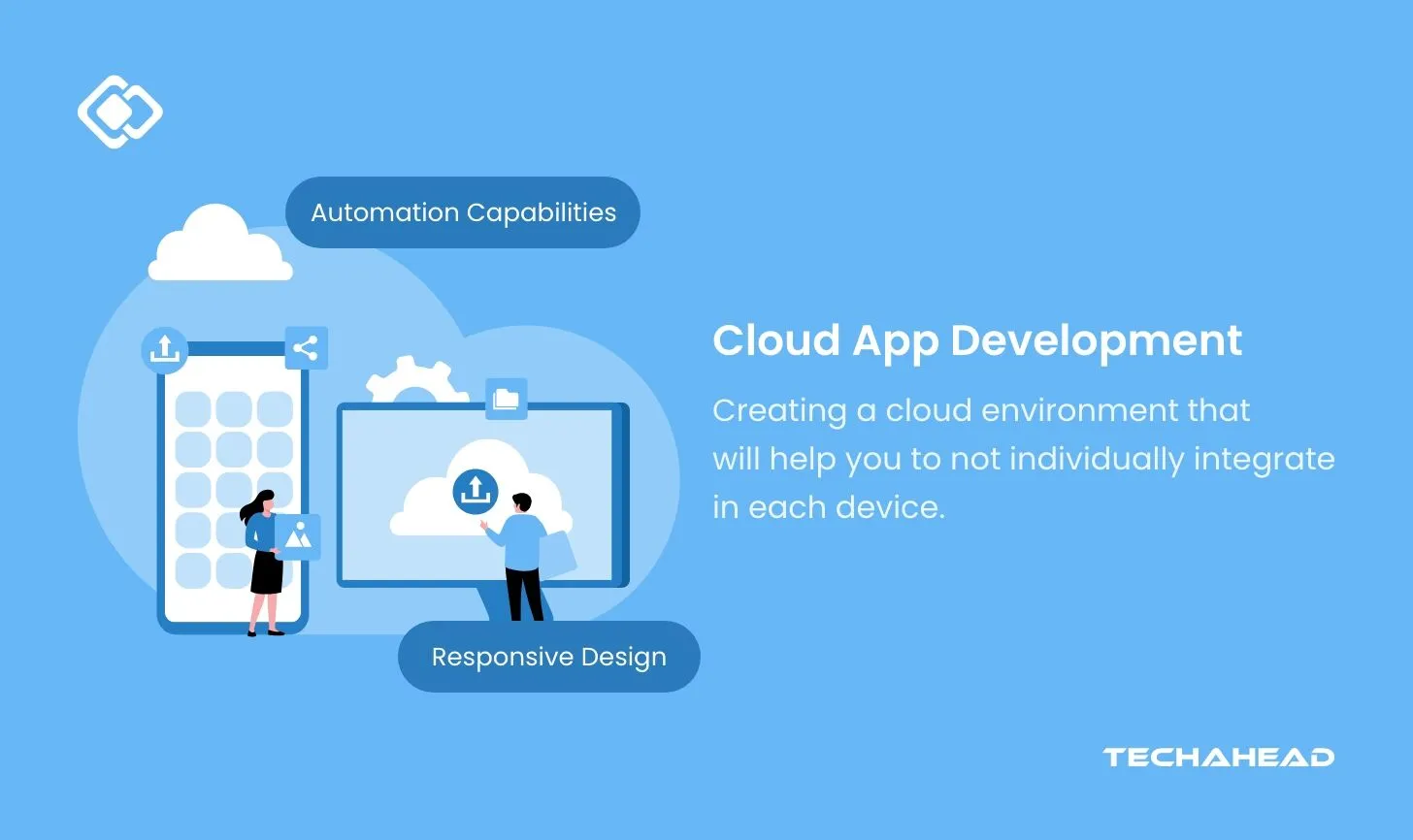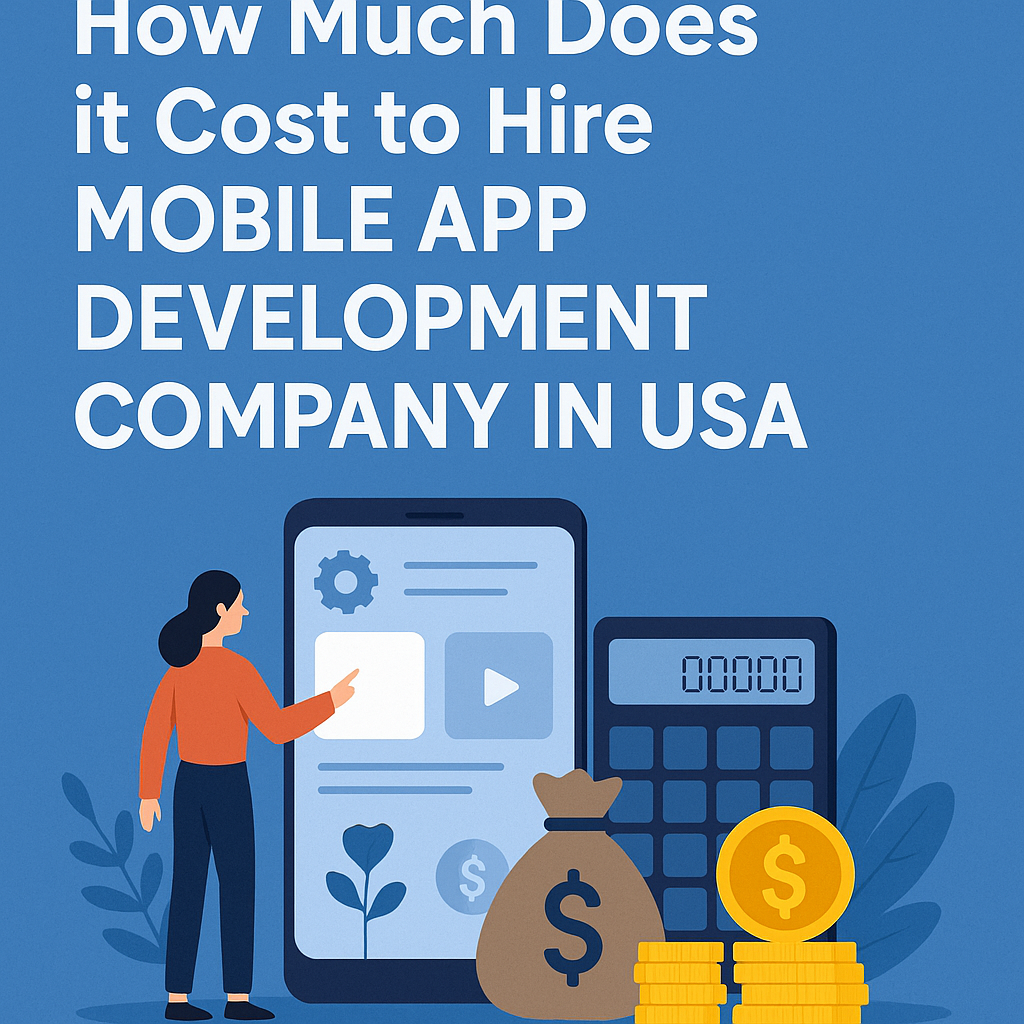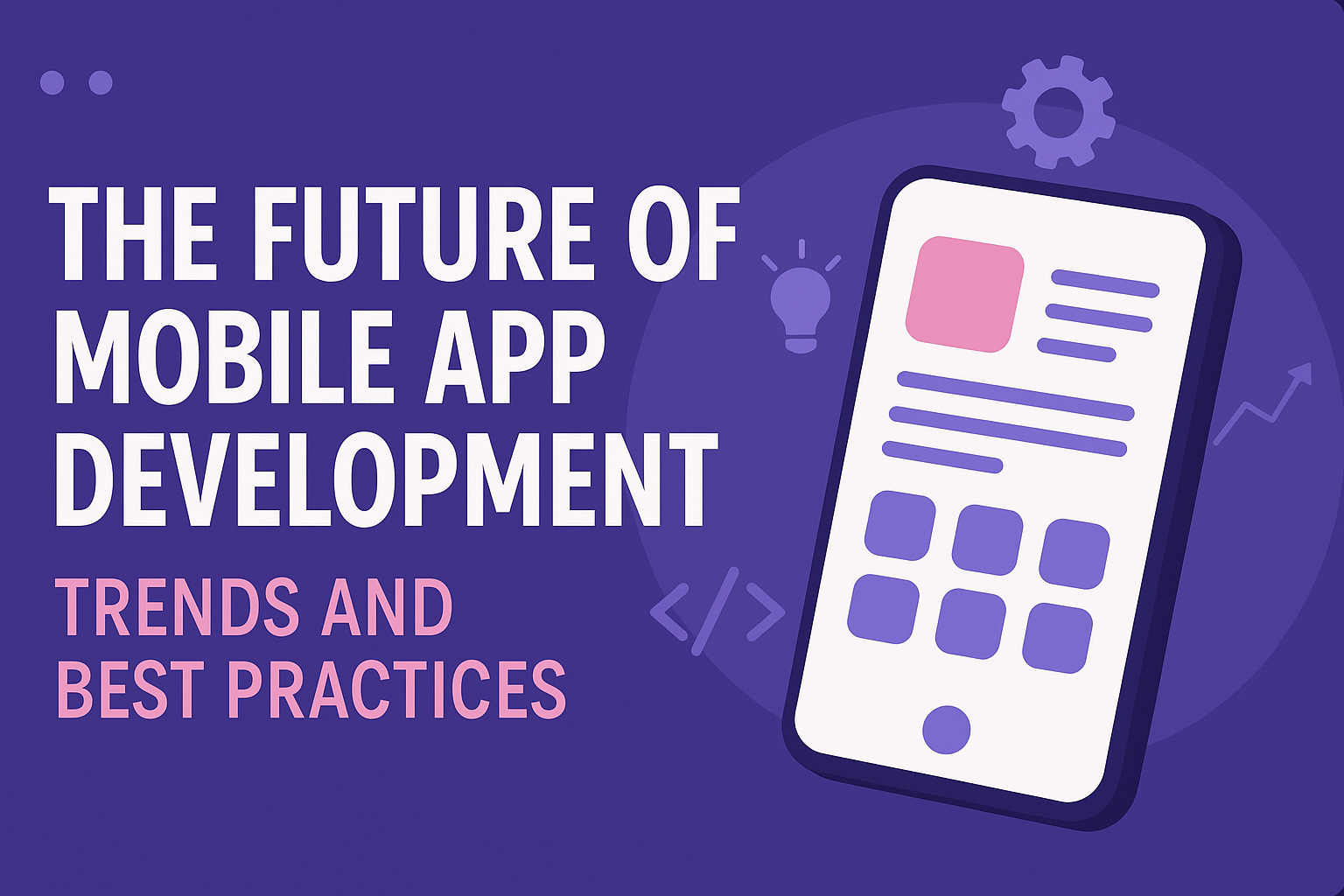The Future of Cloud App Development: Unlocking Business Value

Strong 8k brings an ultra-HD IPTV experience to your living room and your pocket.
Cloud computing is rapidly transforming businesses. Many industry reports reveal that as business mobile applications grow, over 70% of digital workspaces face challenges with storage capacity and performance. The ideal solution to these issues is cloud app development, which provides unmatched scalability and flexibility.
✍️ Voice technology is revolutionizing apps. Learn how voice-enabled assistants are integrated into app development projects worldwide.
Cloud app development simplifies data collection, enabling businesses to gather insights faster and more efficiently. It also enhances data security and streamlines management, making compliance and administration less burdensome. Cloud-powered development solutions empower businesses to create high-performance, productivity-focused applications that drive customer satisfaction and boost revenue.
Furthermore, cloud software solutions support low-code development, a time- and cost-efficient approach that minimizes extensive coding. This allows businesses to launch applications faster, optimizing resource usage and accelerating innovation cycles.
Cloud computing also delivers a multi-experience environment, the future of app development. Through cloud app development, businesses leverage technologies like IoT (Internet of Things), AI (Artificial Intelligence), and ML (Machine Learning), delivering rich, interactive user experiences. By offering seamless, conversational interfaces, cloud-based apps redefine user engagement, making interactions more intuitive and impactful.
The cloud computing market is projected to grow substantially, with an estimated size of USD 0.68 trillion in 2024, anticipated to reach USD 1.44 trillion by 2029 at a CAGR of 16.40% (source: Mordor Intelligence). This robust growth highlights the rising demand for cloud solutions across industries. However, this rapid expansion in cloud applications prompts critical questions for businesses, especially around best practices in cloud app development.
In this guide, we’ll explore how to approach cloud app development effectively, the diverse cloud-based application solutions available, and how they drive value. You’ll gain insights into creating cloud applications that enhance operational efficiency, scalability, and customer engagement.
Let’s begin by examining the essentials that pave the way for efficient and future-ready cloud app development.
What is Cloud App Development?
Cloud app development refers to creating applications within a cloud environment, bypassing the need for local servers. Unlike native applications, cloud-based apps rely extensively on cloud app development services, including data storage and processing, making them accessible through web browsers and other online platforms.
As enterprise development grows more reliant on cloud capabilities, they have leveraged its computational power to build groundbreaking solutions, transforming what’s possible in technology. Cloud services now empower companies to create a vast range of cloud applications that operate seamlessly on the web, often known as web apps.
These cloud apps are reshaping various business functions, taking over essential tasks like email, word processing, file storage, data collection, and even financial accounting. Through cloud app development, organizations are equipped with efficiency, streamline operations, and scale solutions like never before.
Types of Cloud App Development
Software-as-a-Service (SaaS)
SaaS applications are hosted and maintained entirely by a cloud provider, making them accessible via the internet through web browsers. These applications relieve businesses from handling updates, server management, and software installations, as all maintenance is centrally managed by the provider. Users can seamlessly access features, integrate productivity tools, and share data across teams, which enhances operational efficiency.
Solutions like Google Workspace, Salesforce, and Slack exemplify SaaS by providing essential tools for collaboration, sales, and project management within a single, easily accessible platform.
Platform-as-a-Service (PaaS)
PaaS offers a managed environment for application development, which includes tools for building, testing, and deploying software while the cloud provider oversees infrastructure. By managing hardware and backend services, PaaS enables development teams to focus solely on cloud app development without the burden of configuring servers or databases. This platform accelerates time-to-market and streamlines scaling since the underlying resources are automatically adjusted as demand increases.
Examples like Microsoft Azure App Services and Google App Engine give developers robust frameworks and APIs, helping them build complex applications with minimal operational overhead.
Infrastructure-as-a-Service (IaaS)
IaaS delivers essential computing infrastructure such as virtual servers, storage, and networking resources. Unlike traditional on-premises infrastructure, IaaS allows businesses to pay for only the resources they use, which is ideal for scaling and managing large workloads flexibly. This model offers extensive control over the infrastructure, enabling IT teams to customize their environments and manage systems as needed.
Leading providers like AWS, Azure, and Google Cloud Platform provide services that allow companies to extend, scale, and secure their infrastructure easily, aligning with cloud app development needs for flexibility and resilience.
Function-as-a-Service (FaaS)
FaaS is part of serverless computing, allowing developers to deploy discrete code functions triggered by specific events, like user actions or system updates. With FaaS, there’s no need to manage or scale servers manually; the cloud provider handles it automatically based on demand. This model is ideal for applications requiring quick responses to high volumes of concurrent events, as it enhances cost efficiency and operational simplicity.
Popular FaaS services include AWS Lambda and Google Cloud Functions, which cater to cloud app development that prioritizes lightweight, highly scalable, and event-driven functionality.
Container-as-a-Service (CaaS)
CaaS leverages containers—lightweight, portable units of software that package application code along with its dependencies—for more efficient deployment and scaling across different environments. This model is highly beneficial for businesses adopting microservices architectures, as containers improve consistency in app deployment from development to production. CaaS platforms utilize orchestration tools, like Kubernetes, to automate the deployment, scaling, and management of containerized applications across multiple cloud or on-premises environments.
CaaS aligns with cloud app development demands for agility, allowing applications to scale seamlessly across hybrid or multi-cloud setups without compatibility issues.
Features of Every Cloud App Development Should Have
Simplified Development Process
An effective cloud app development platform should prioritize speed and simplicity. It should streamline architectural decisions, reducing complexity in creating and deploying applications across diverse technical environments. This simplicity allows hired developers to address challenges faster, minimizing errors and accelerating deployment. An efficient platform optimizes the overall development workflow, making it seamless to launch applications that meet high standards across various infrastructures.
Flexibility and Scalability
In cloud app development, flexibility is paramount. A robust platform should allow users to easily scale resources—adding or removing computing power, storage, and networking assets as demands fluctuate. Through automated scaling, these platforms adapt to dynamic workloads, preventing bottlenecks while ensuring optimal performance. During peak demand, a well-configured platform should instantly increase resources, and when demand lessens, it should scale down, maximizing cost-efficiency and resource allocation.
Advanced Security Measures
Security in cloud app development is a core feature, as cloud platforms employ top-tier security experts dedicated to threat management. These platforms adhere to stringent security protocols, often exceeding the protection provided by in-house teams. With compliance measures integrated, organizations can meet industry and governmental regulations effortlessly. Notably, 91% of companies report improved regulatory compliance post-cloud migration, emphasizing the cloud’s ability to safeguard data and ensure confidentiality.
You can also learn about the pillars of AI security and how it is protecting future technology.
Automation Capabilities
Automated processes are vital for managing complex, repetitive tasks in cloud app development. Advanced platforms support continuous integration and resource orchestration, which reduce operational burdens. Automation tools manage workload scaling, ensuring resources are available when needed without manual intervention. This allows IT teams to support growing demands efficiently while concentrating on strategic initiatives, enhancing overall operational efficiency.
Pay-Per-Use Pricing Model
A pay-per-use model enhances cost control within cloud app development, as users only pay for what they consume. This approach eliminates unnecessary expenses, allowing businesses to scale resources economically. Cloud providers track and report usage metrics, helping users monitor and optimize expenses. Some providers also offer a base level of free storage or computing power, making cloud resources even more accessible for startups and small businesses.
Steps to Take While Developing a Cloud App
Creating a cloud app can involve web or mobile solutions, with the required technologies varying by solution type. Despite technical differences, the fundamental process in cloud app development follows similar phases to build a robust, user-centered application.
Step 1: Define Your Goals for Cloud App Development
Establishing clear objectives is crucial before development begins. Align all stakeholders on the project’s vision and goals during the discovery phase, helping the team understand the core business needs.
Reasons to consider cloud app development include:
- Workflow automation: Streamlining repetitive tasks saves time and resources
- Centralized data storage: Access and manage data easily within a single, organized environment.
- Enhanced team collaboration: Improve internal communication and ensure seamless data exchanges.
- Advanced reporting and analytics: Gain valuable insights to drive data-based decisions.
The discovery phase also allows developers to identify project scope, complexities, potential challenges, and costs. If a swift market entry is critical, a Minimum Viable Product (MVP) may be the best first step.
Step 2: Choose the Right Development Team
Cloud app development requires specialized skills, so selecting the right development team is essential. You can opt for freelancers, in-house talent, or outsource to a software development company.
Choosing a reliable cloud app development partner ensures ongoing support as the app evolves. Here are some questions to assess potential developers:
- Can you share similar cloud app projects you have handled?
- What platforms and technologies are you skilled in?
- How do you prioritize security and scalability in development?
- How do you approach cost management for cloud resources?
- Can you ensure effective collaboration throughout the project?
A reliable development partner can adapt the app as technology advances and business needs grow.
Step 3: Determine Key Features for Your Cloud App
Identify core features that create a user-friendly experience in cloud applications. Essential features include:
- Cross-platform compatibility: Allow users to access the app on their preferred devices.
- Security protocols: Implement logins and access controls to protect user data.
- Real-time collaboration tools: Enable users to work together through features like chat, live comments, and shared documents.
- Scalability: Ensure the app can handle increasing users or workload.
Incorporating these features enhances user satisfaction and engagement, setting your app up for success.
Step 4: Plan the App’s Architecture
Your app’s architecture is the backbone of cloud app development, influencing scalability, security, and cost efficiency. Choose an architecture that aligns with your project’s requirements.
Key options include:
- Monolithic architecture: A single, interconnected application; easy to develop but challenging to scale.
- Microservices architecture: Divides the app into independent services; highly scalable but may face performance trade-offs.
- Serverless architecture: Uses event-triggered functions in a serverless environment, ideal for low-maintenance, scalable solutions.
- Hybrid architecture: Combines on-premises and cloud resources for high flexibility but may involve integration complexities.
Select an architecture that best aligns with your cloud app development goals. You can also look into this guide on Serverless Vs. Microservices architecture.
Step 5: Choose Your Tech Stack
The technology stack determines how quickly, securely, and effectively the app functions. Different projects require different combinations of programming languages (e.g., Java, Python, Node.js), databases (e.g., MongoDB, Firebase), frameworks (e.g., React, Angular), and containers (e.g., Docker, Kubernetes).
For instance, a Python-based stack offers scalability and maintenance ease, while Ruby on Rails works well for prototyping and collaboration. Choose the right tech stack that aligns with your app’s performance and integration needs.
Step 6: Design the App’s User Interface (UI) and User Experience (UX)
Effective UI/UX design is vital in cloud app development to create intuitive and visually appealing apps. Consider these elements:
- Responsive design: Ensure seamless functionality across platforms and screen sizes.
- Easy navigation: Users should quickly find what they need with minimal guidance.
- Adaptability to dark mode: Offer both light and dark modes to reduce eye strain.
- Scalability: Design a UI that accommodates future growth and additional features.
A responsive, intuitive, and adaptable UI makes the app user-friendly and future-proof. You can learn more about the Mobile UI designs as well.
Step 7: Develop and Test the Cloud App
Cloud app development typically uses Agile or DevOps methodologies, depending on project needs and team preferences.
- Agile development emphasizes short, iterative development cycles, with regular testing and feedback after each sprint. Agile promotes flexibility, allowing the team to adapt to evolving requirements.
- DevOps fosters collaboration across development and operations, with a focus on Continuous Integration/Continuous Delivery (CI/CD) and automation for efficient testing and deployment.
Both approaches streamline development, but the choice depends on team readiness and project goals.
Step 8: Launch and Maintain the App
Successful cloud app development doesn’t end with deployment. Continuous maintenance keeps your app relevant, responsive, and secure. Essential areas include:
- Security updates: Regular patches to safeguard user data.
- Performance optimization: Keep the app fast and responsive as usage grows.
- Scalability adjustments: Ensure the app scales efficiently as demand fluctuates.
- Technology updates: Adapt the stack to new versions or libraries.
Ongoing maintenance ensures a secure, scalable, and high-performing cloud app that keeps pace with technological advancements and user expectations.
Benefits of Cloud App Development
Cost Efficiency
Cloud app development significantly reduces costs by eliminating the need for on-premise infrastructure. With cloud-based applications, businesses only pay for the services they use, making it approximately 40% more affordable for small companies. This pay-as-you-go model means businesses can adjust monthly expenses based on usage, resulting in ongoing cost control.
Unlike traditional hardware, which requires significant upfront investment, cloud solutions offer flexible pricing that can scale with business growth. Additionally, many providers offer cost-saving options, like discounts on long-term contracts for larger enterprises.
You can learn more about the cost of app development.
Enhanced Security
Data security remains a huge priority when it comes to cloud app development. While integrating them, they tend to provide robust protection that safeguards sensitive information. Top cloud-based service providers employ advanced encryption techniques. It all helps in making it harder to get data accessibility for unauthorized users.
Even if there’s an intrusion attempt, encryption ensures data remains protected. Cloud hosting also includes 24/7 monitoring by specialized security teams, often surpassing the reliability of in-house systems. Research shows that 94% of businesses have reported enhanced data security after moving to cloud-based applications, demonstrating its effectiveness in managing data integrity and safety.
Competitive Advantage
Leveraging cloud app development gives companies a significant competitive edge. Cloud services handle infrastructure management, freeing up IT teams to focus on innovation and growth-centric initiatives. With a faster deployment cycle and access to the latest cloud technologies, cloud-enabled companies stay ahead in a rapidly evolving market.
Studies indicate that 77% of organizations find cloud technology helps maintain a competitive advantage. Cloud providers regularly update their offerings, allowing businesses to utilize state-of-the-art tools without needing continual hardware upgrades.
Greater Flexibility
Cloud app development introduces flexibility that in-house servers can’t match, especially in scaling resources. Teams no longer need to worry about storage or bandwidth limitations since cloud infrastructure can easily expand based on demand. This adaptability enables businesses to swiftly respond to changing market needs and to adjust resources during peak times. By outsourcing app development to cloud providers, in-house teams can focus on creating impactful solutions that directly support business objectives, fostering a more agile methodology, and resilient organization.
You can learn more about Offshore Vs. Onshore.
Seamless Business Insights
Current data-driven environment, the insights derived from cloud app development are invaluable. Cloud storage solutions offer powerful analytics tools that allow businesses to process and analyze data effortlessly. With these tools, businesses can gain actionable insights, create detailed reports, and use real-time data to enhance decision-making.
Conclusion
Cloud computing is transformative, future-ready technology that drives business scalability, efficiency, and sustainable growth. Leveraging cloud app development, companies startups or even established enterprises can significantly enhance performance, streamline operations, and cut down on overhead expenses.
Investing in cloud app development services is a strategic step for any business aiming to launch a resilient, next-gen mobile application. Given the technical expertise required for implementing cloud infrastructure in mobile applications, it’s advisable to engage skilled app developers with experience in startup solutions.
Source URL: https://www.techaheadcorp.com/blog/cloud-app-development-reaching-the-value-infection-point/
Note: IndiBlogHub features both user-submitted and editorial content. We do not verify third-party contributions. Read our Disclaimer and Privacy Policyfor details.







